
漢德百科全書 | 汉德百科全书
 Party and government
Party and government
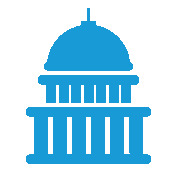
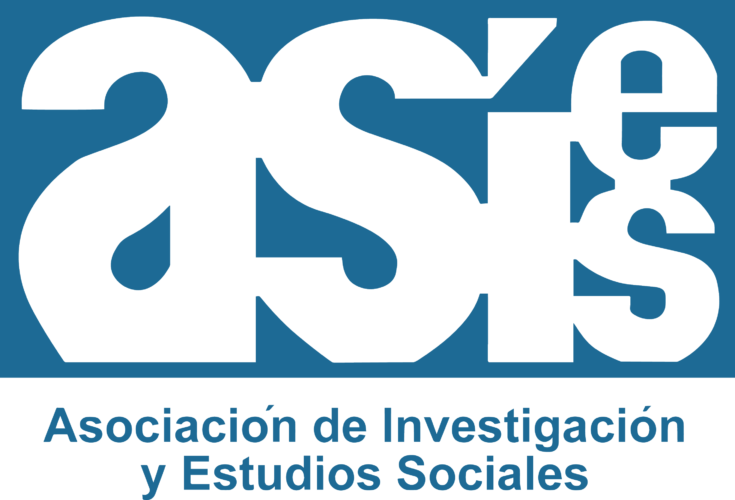


 Aleksandar Vučić
Aleksandar Vučić
 Alexis Tsipras
Alexis Tsipras
 Aljaksandr Lukaschenka
Aljaksandr Lukaschenka
 Almasbek Atambajew
Almasbek Atambajew
 Aung San Suu Kyi
Aung San Suu Kyi

 Beijing Shi-BJ
Beijing Shi-BJ
 Belt and Road Forum
Belt and Road Forum
 Bounnhang Vorachith
Bounnhang Vorachith
 China
China
 Doris Leuthard
Doris Leuthard
 Dschargaltulgyn Erdenebat
Dschargaltulgyn Erdenebat
 Generalsekretär der Vereinten Nationen
Generalsekretär der Vereinten Nationen
 António Guterres
António Guterres
 Hailemariam Desalegn
Hailemariam Desalegn

 Hand in Hand
Hand in Hand
 Hun Sen
Hun Sen
 International Renewable Energy Agency,IRENA
International Renewable Energy Agency,IRENA
 Adnan Z. Amin
Adnan Z. Amin
 Internationaler Währungsfonds
Internationaler Währungsfonds
 Christine Lagarde
Christine Lagarde
 Interpol
Interpol
 Jürgen Stock
Jürgen Stock
 Joko Widodo
Joko Widodo
 Li Keqiang
Li Keqiang
 Mariano Rajoy
Mariano Rajoy
 Mauricio Macri
Mauricio Macri
 Michelle Bachelet
Michelle Bachelet
 Najib Razak
Najib Razak
 Nawaz Sharif
Nawaz Sharif
 Nursultan Nasarbajew
Nursultan Nasarbajew
 Paolo Gentiloni
Paolo Gentiloni
 Präsident der Generalversammlung der Vereinten Nationen
Präsident der Generalversammlung der Vereinten Nationen
 Peter Thomson
Peter Thomson
 Ranil Wickremesinghe
Ranil Wickremesinghe
 Recep Tayyip Erdoğan
Recep Tayyip Erdoğan
 Rodrigo Duterte
Rodrigo Duterte
 Silk road
Silk road
 Shavkat Mirziyoyev
Shavkat Mirziyoyev

 Uhuru Kenyatta
Uhuru Kenyatta
 UNESCO
UNESCO
 Irina Bokowa
Irina Bokowa
 Viktor Orbán
Viktor Orbán
 World Bank
World Bank
 Jim Yong Kim
Jim Yong Kim

 Economy and trade
Economy and trade
 Wladimir Wladimirowitsch Putin
Wladimir Wladimirowitsch Putin
 World Economic Forum,WEF
World Economic Forum,WEF
 Klaus Schwab
Klaus Schwab
 World Health Organization, WHO
World Health Organization, WHO
 Margaret Chan
Margaret Chan
 World Trade Organization
World Trade Organization
 Roberto Azevêdo
Roberto Azevêdo
 Xi Jingping
Xi Jingping
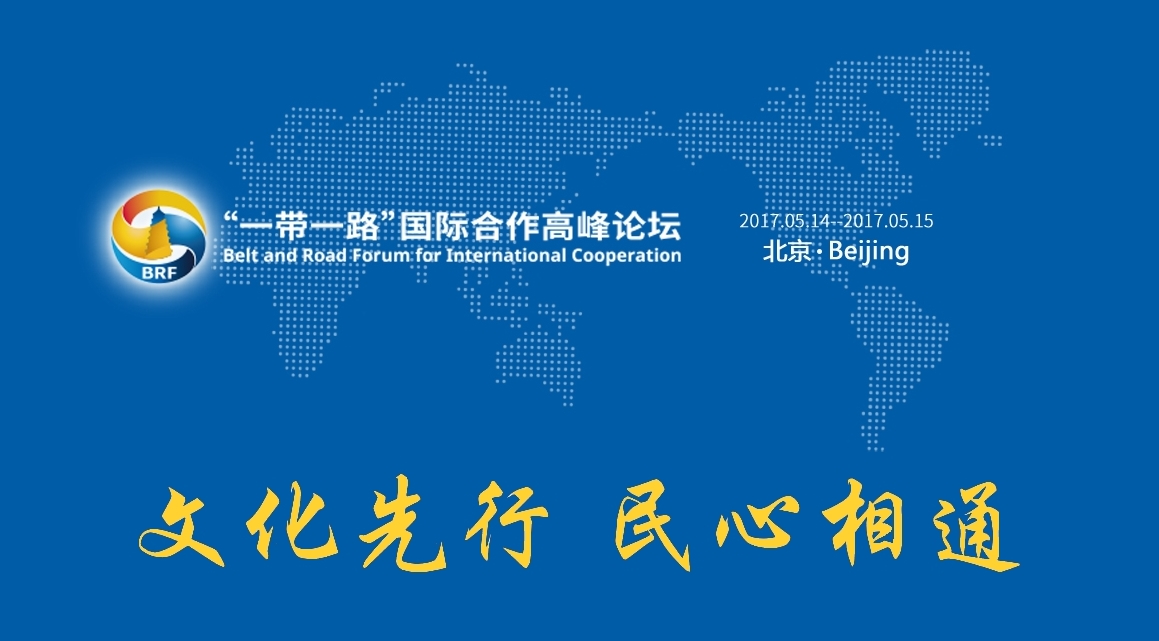


Iran, auch: der Iran (mit Artikel),[6] persisch ايران, DMG Īrān, [ʔiːˈɾɒːn], Vollform: Islamische Republik Iran, vor 1935 auf internationaler Ebene (exonym) auch Persien, ist ein Staat in Vorderasien. Mit rund 83 Millionen Einwohnern (Stand 2019)[7] und einer Fläche von 1.648.195 Quadratkilometern zählt Iran zu den 20 bevölkerungsreichsten und größten Staaten der Erde. Hauptstadt, größte Stadt und wirtschaftlich-kulturelles Zentrum Irans ist Teheran, weitere Millionenstädte sind Maschhad, Isfahan, Täbris, Karadsch, Schiras, Ahvaz und Ghom. Der Iran bezeichnet sich selbst seit der Islamischen Revolution 1979 als Islamische Republik.
Iran besteht großteils aus hohem Gebirge und trockenen, wüstenhaften Becken. Seine Lage zwischen dem Kaspischen Meer und der Straße von Hormus am Persischen Golf macht ihn zu einem Gebiet von hoher geostrategischer Bedeutung mit langer, bis in die Antike zurückreichender Geschichte.
Nachdem sich zwischen 3200 und 2800 v. Chr. das Reich Elam gebildet hatte, vereinigten die iranischen Meder das Gebiet um 625 v. Chr. erstmals zu einem Staat, der die kulturelle und politische Führerschaft in der Region übernahm. Die von Kyros begründete Dynastie der Achämeniden regierte von Südiran aus das bis dato größte Reich der Geschichte. Es wurde im Jahre 330 v. Chr. durch die Truppen Alexanders des Großen zerstört. Nach Alexander teilten seine Nachfolger (Diadochen) das Reich unter sich auf, bis sie im iranischen Bereich um die Mitte des 3. Jahrhunderts v. Chr. durch die Parther abgelöst wurden. Auf diese folgte ab etwa 224 n. Chr. das Reich der Sassaniden, das bis zum 7. Jahrhundert neben dem Byzantinischen Reich zu den mächtigsten Staaten der Welt zählte. Nach dem Übergreifen der islamischen Expansion auf Persien, in deren Verlauf der Zoroastrismus durch den Islam ersetzt wurde, wurden persische Gelehrte zu Trägern des Goldenen Zeitalters, bis der Mongolensturm im 13. Jahrhundert das Land in seiner Entwicklung weit zurückwarf.
Die Safawiden einigten das Land und machten 1501 das zwölferschiitische Bekenntnis zur Staatsreligion. Unter der 1794 gegründeten Kadscharen-Dynastie schrumpfte der Einfluss Persiens; Russland und Großbritannien zwangen die Perser zu territorialen und wirtschaftlichen Konzessionen. 1906 kam es zur konstitutionellen Revolution, in deren Ergebnis Persien sein erstes Parlament und eine Verfassung erhielt, in der Gewaltenteilung vorgesehen war. Als Staatsform erhielt es die konstitutionelle Monarchie. Die beiden Monarchen der Pahlavi-Dynastie betrieben eine Politik der Modernisierung und Säkularisierung, parallel dazu wurde das Land im Ersten Weltkrieg durch russische, britische und türkische Truppen und im Zweiten Weltkrieg durch britische und sowjetische Truppen besetzt. Danach kam es wiederholt zu ausländischer Einflussnahme wie der Gründung einer Autonomen Republik Aserbaidschan mit sowjetischer Hilfe oder einem von der CIA organisierten Staatsstreich im Jahr 1953. Die Unterdrückung der liberalen, kommunistischen und islamischen Opposition führte zu vielseitigen Spannungen, die in der Revolution von 1979 und dem Sturz des Schahs kulminierten.
Seitdem ist Iran eine theokratische Republik, die von schiitischen Geistlichen geführt wird, an deren Spitze der Religionsführer die Macht auf sich konzentriert. Kontrolliert wird er nur vom Expertenrat. Regelmäßige Wahlen werden abgehalten, aber aufgrund der umfassenden Einhegung durch die Machthaber, von Manipulationsvorwürfen und der unbedeutenden Stellung des Parlamentes sowie des Präsidenten als undemokratisch kritisiert. Der iranische Staat kontrolliert nahezu jeden Aspekt des täglichen Lebens in Hinblick auf religiöse und ideologische Konformität und durchdringt so das Leben aller Bürger und beschneidet die Freiheit des Einzelnen. Es gibt im Iran keine umfassende Presse- oder Meinungsfreiheit. Seit der Islamischen Revolution haben sich die guten Beziehungen zu westlichen Staaten in eine offene Feindschaft gewandelt, die vor allem bezüglich der ehemals befreundeten USA und Israel auch fest in der Staatsideologie verankert ist. Der Iran ist außenpolitisch weitgehend isoliert, gleichzeitig eine Regionalmacht im Nahen Osten.
Neben ethnischen Persern leben im Iran zahlreiche andere Völker, die ihre eigene sprachliche und kulturelle Identität besitzen. Die Amtssprache ist Persisch. Die größten ethnischen Gruppen nach den Persern sind Aserbaidschaner, Kurden und Luren. Die Völker des Iran verfügen über lange Traditionen in Kunsthandwerk, Architektur, Musik, Kalligraphie und Poesie; im Land befinden sich zahlreiche Stätten des UNESCO-Welterbes.
伊朗伊斯兰共和国(波斯语:جمهوری اسلامی ایران,Jomhuriye Eslâmiye Irân,[dʒomhuːˌɾije eslɒːˌmije ʔiːˈɾɒn]),通称伊朗(波斯语:ایران,Irān,[ʔiːˈɾɒːn] (![]() 发音) ),1501年之前很长一段历史时间被外界称波斯[注 2],位于西亚,为中东国家,其中北部紧靠里海、南濒波斯湾和阿拉伯海。伊朗东邻巴基斯坦和阿富汗,东北部与土库曼斯坦接壤,西北与阿塞拜疆和亚美尼亚,以及国际上属阿塞拜疆的纳希切万自治共和国为邻,西接土耳其和伊拉克(库尔德斯坦)。国土面积为1,648,195平方公里,国土主要位于伊朗高原上,气候较为干燥。人口8320万人,为多民族国家,其主体民族为波斯人,约占总人口的52%,其余有阿塞拜疆人、库尔德人、阿拉伯人等。官方语言为波斯语。伊斯兰教什叶派的十二伊玛目宗(信众超过全国人口的90%)为伊朗国教,宪法承认的其余教派有伊斯兰教逊尼派、祆教、犹太教、基督宗教等。首都为德黑兰。
发音) ),1501年之前很长一段历史时间被外界称波斯[注 2],位于西亚,为中东国家,其中北部紧靠里海、南濒波斯湾和阿拉伯海。伊朗东邻巴基斯坦和阿富汗,东北部与土库曼斯坦接壤,西北与阿塞拜疆和亚美尼亚,以及国际上属阿塞拜疆的纳希切万自治共和国为邻,西接土耳其和伊拉克(库尔德斯坦)。国土面积为1,648,195平方公里,国土主要位于伊朗高原上,气候较为干燥。人口8320万人,为多民族国家,其主体民族为波斯人,约占总人口的52%,其余有阿塞拜疆人、库尔德人、阿拉伯人等。官方语言为波斯语。伊斯兰教什叶派的十二伊玛目宗(信众超过全国人口的90%)为伊朗国教,宪法承认的其余教派有伊斯兰教逊尼派、祆教、犹太教、基督宗教等。首都为德黑兰。
伊朗古称波斯,在公元前28世纪建立的古埃兰王国和之后建立的米底王国是伊朗高原文明的发源地。到公元前550年,由居鲁士大帝建立了大一统的古代大帝国波斯帝国。公元7世纪中叶,波斯的萨珊王朝被阿拉伯征服,包括伊朗高原的中东地区开始伊斯兰化,而曾占统治地位的祆教则日渐式微。近代,波斯逐渐沦为英国和俄国的半殖民地。1925年,巴列维王朝建立。二战后,国王穆罕默德-礼萨·巴列维逐渐摆脱英、苏两国对伊朗的控制,奉行亲美政策,国家经济建设获得较大发展,在中东地区获得了较大的影响力。1979年初,鲁霍拉·穆萨维·霍梅尼领导的伊斯兰革命爆发,王朝政权被推翻,成立伊朗伊斯兰共和国,同年底发生美国驻伊使馆人质事件,伊朗转为反美的先锋,与以美国为首的西方国家交恶。
伊朗伊斯兰共和国实行政教合一的政治体制,伊斯兰教在国家的政治生活中担任非常重要的角色,最高领袖是国家的最高领导人和武装力量最高统帅,由伊斯兰教神职人员组成的专家会议选举产生,霍梅尼为首任最高领袖,现任最高领袖为赛义德阿里·侯赛尼·哈梅内伊。伊朗政府实行总统内阁制,总统是继最高领袖之后的国家第二号领导人,既是国家元首,又是政府首脑,但不是军事统帅,由全民普选产生,现任总统为哈桑·鲁哈尼,第一副总统为艾沙格·贾汉基里。伊朗最高立法机构为伊斯兰议会,实行一院制,现任议长为阿里·拉里贾尼。伊朗司法总监是伊朗的司法最高首脑,由最高领袖任命,最高法院院长和总检察长则由司法总监任命,现任司法总监为萨迪格·拉里贾尼。
伊朗是亚洲和中东主要经济体之一,经济实力较强,2012年国内生产总值为5485.9亿美元,居世界第21位,人均国内生产总值7207美元,居世界第76位(国际货币基金组织数据)。石油产业是伊朗的支柱,伊朗是世界第四大石油生产国、石油输出国组织第二大石油输出国。伊朗的货币名称为里亚尔,主要的贸易伙伴有中国、印度、阿拉伯联合酋长国、土耳其等。伊朗奉行独立、不结盟的对外政策,同时是联合国、不结盟运动、伊斯兰会议组织、石油输出国组织的创始会员国。
イラン・イスラム共和国(イラン・イスラムきょうわこく、ペルシア語:جمهوری اسلامی ایران)、通称イランは、アジア・中東に位置するイスラム共和制国家。北西にアルメニアとアゼルバイジャン、北にカスピ海、北東にトルクメニスタン、東にアフガニスタンとパキスタン、南にペルシア湾とオマーン湾、西にトルコ、イラク(クルディスタン)と境を接する。また、ペルシア湾を挟んでクウェート、サウジアラビア、バーレーン、カタール、アラブ首長国連邦に面する。ペルシア、ペルシャともいう。
前6世紀のアケメネス朝時代から繁栄し、ササン朝時代にはゾロアスター教が国教だったが、642年にアラブ人に滅ぼされ、イスラム教が広まった。16世紀初めに成立したサファビー朝がシーア派十二イマーム派を国教とし、イラン人の国民意識を形成した。18世紀のカージャール朝を経て、1925年からパフラヴィー朝になったが、1979年のルーホッラー・ホメイニー師によるイラン革命により王政は廃され、宗教上の最高指導者が国の最高権力を持つイスラム共和制が樹立された[4]。
政治体制は、1979年に制定されたイラン・イスラーム共和国憲法によって規定されており、国の元首である最高指導者の地位は、宗教法学者に賦与され、自由は「イスラムの原則に反しない限り」でしか認められない[5]。憲法では三権分立が規定され、立法権は一院制の国民議会、行政権は大統領にあるが、大統領の地位は最高指導者に劣る。イラン革命とシーア派に忠実であることが資格として要求される[5]。ヒューマン・ライツ・ウォッチは政府が抗議者に対して恣意的な逮捕を行い、治安当局や諜報当局による深刻な虐待が行われていることを報告している[6]。エコノミスト誌傘下の研究所エコノミスト・インテリジェンス・ユニットによる民主主義指数は、世界151位と後順位で「独裁政治体制」に分類されている(2019年度)[7]。国境なき記者団による世界報道自由度ランキングも173位と後順位で最も深刻な国の一つに分類されている(2020年度)[8]。
外交面ではパフラヴィー朝時代にはアメリカ合衆国の強い影響下にあったが、革命によりアメリカとの関係が悪化、特にアメリカ大使館人質事件以降、公然たる敵対関係に入った。アメリカからはテロ支援国家に指定されている[5]。 他方でイラン革命指導者は反共主義者が多いため、ソビエト連邦とも友好的ではなく、革命後の外交は排外主義的な非同盟中立路線を基本とする[5]。近年は核兵器開発を行っている疑惑から経済制裁を受けている。2015年にオバマ政権下のアメリカと核合意を締結して制裁解除を取り付けたが、トランプ政権が破棄し制裁が再開されたため、段階的に核合意履行停止を進めている[9]。
経済面ではパフラヴィー朝時代にアメリカからの経済援助を元手に経済各分野の近代化を進め、高度経済成長を成し遂げた。イラン革命の混乱とイラン・イラク戦争で経済は停滞したが、その後立て直しが図られた[5]。世界有数の石油の産出地であり、それが国の主要財源である[4]。しかし近年は長引くアメリカの制裁と新型コロナウイルスのパンデミックにより経済状態が深刻化している[10]。
軍事面では王政時代からの伝統を持つ正規軍と別に、革命後に創設された革命防衛隊という最高指導者直轄の親衛隊的軍事組織が存在するのが特徴である[11][12]。革命防衛隊はイラン国外の対外工作にも深くかかわり[13]、アメリカのトランプ政権から「テロ組織」に指定された[14]。男性に2年の兵役を課す徴兵制を採用しており[15]、兵力は61万人ほどである(2020年時)[16]。
2017年の国勢調査によると人口は約8千万人で、世界で17位であった。多くの民族と言語が存在する多文化国家であり、主要な民族の構成はペルシア人(61%)、アゼルバイジャン人(35%)、クルド人(10%)、ロル族(6%)である。宗教は99%がイスラム教徒でその大部分(89%)がシーア派である。トルクメン人、バルーチ人、クルド人など10%がスンニ派を信仰している。極めて少数派としてユダヤ教、キリスト教、ゾロアスター教、バハーイー教の教徒もいるが、バハーイー教は非合法にされている[5]。言語はペルシア語が公用語で大半を占めているが、他にクルド語やアゼルバイジャン語などがある[4]。
地理としては、総面積は1,648,195 平方キロメートル(km2)で、中東で2番目に大きく、世界では17位である。北部を東西にアルボルズ山脈が、北西部から南東部にザーグロス山脈が走り、その間にイラン高原が広がる。国土のほとんどがイラン高原上にある[5]。同国はユーラシアの中心に位置し、ホルムズ海峡に面するため、地政学的に重要な場所にある。首都であるテヘランは同国の最も大きな都市であり、経済と文化の中心地でもある。イランには文化的な遺産が多く存在し、ユネスコの世界遺産には22個登録されている。これはアジアでは3番目、世界では11番目に多い。
Iran (Persian: ایران Irān [ʔiːˈɾɒːn] (![]() listen)), also called Persia,[11] and officially the Islamic Republic of Iran,[a] is a country in Western Asia. It is bordered to the northwest by Armenia and Azerbaijan,[b] to the north by the Caspian Sea, to the northeast by Turkmenistan, to the east by Afghanistan, to the southeast by Pakistan, to the south by the Persian Gulf and the Gulf of Oman, and to the west by Turkey and Iraq. Iran covers an area of 1,648,195 km2 (636,372 sq mi), with a population of 83 million. It is the second-largest country in the Middle East, and its capital and largest city is Tehran.
listen)), also called Persia,[11] and officially the Islamic Republic of Iran,[a] is a country in Western Asia. It is bordered to the northwest by Armenia and Azerbaijan,[b] to the north by the Caspian Sea, to the northeast by Turkmenistan, to the east by Afghanistan, to the southeast by Pakistan, to the south by the Persian Gulf and the Gulf of Oman, and to the west by Turkey and Iraq. Iran covers an area of 1,648,195 km2 (636,372 sq mi), with a population of 83 million. It is the second-largest country in the Middle East, and its capital and largest city is Tehran.
Iran is home to one of the world's oldest civilizations,[12][13] beginning with the formation of the Elamite kingdoms in the fourth millennium BC. It was first unified by the Iranian Medes in the seventh century BC,[14] and reached its territorial height in the sixth century BC, when Cyrus the Great founded the Achaemenid Empire, which became one of the largest empires in history and the world's first superpower.[15] The empire fell to Alexander the Great in the fourth century BC and was divided into several Hellenistic states. An Iranian rebellion established the Parthian Empire in the third century BC, which was succeeded in the third century AD by the Sasanian Empire, a major world power for the next four centuries.[16][17] Arab Muslims conquered the empire in the seventh century AD, which led to the Islamization of Iran. It subsequently becoming a major center of Islamic culture and learning, with its art, literature, philosophy, and architecture spreading across the Muslim world and beyond during the Islamic Golden Age. Over the next two centuries, a series of native Muslim dynasties emerged before the Seljuq Turks and the Mongols conquered the region. In the 15th century, the native Safavids re-established a unified Iranian state and national identity[4] and converted the country to Shia Islam.[5][18] Under the reign of Nader Shah in the 18th century, Iran once again became a major world power,[19][page needed] though by the 19th century a series of conflicts with Russia led to significant territorial losses.[20][21] The early 20th century saw the Persian Constitutional Revolution. Efforts to nationalize its fossil fuel supply from Western companies led to an Anglo-American coup in 1953, which resulted in greater autocratic rule under Mohammad Reza Pahlavi and growing Western political influence.[22] He went on to launch a far-reaching series of reforms in 1963.[23] After the Iranian Revolution, the current Islamic Republic was established in 1979[24] by Ruhollah Khomeini, who became the country's first Supreme Leader.
The Government of Iran is an Islamic theocracy which includes elements of a presidential democracy, with the ultimate authority vested in an autocratic "Supreme Leader",[25] a position held by Ali Khamenei since Khomeini's death in 1989. The Iranian government is widely considered to be authoritarian, and has attracted widespread criticism for its significant constraints and abuses against human rights and civil liberties,[26][27][28][29] including several violent suppressions of mass protests, unfair elections, and limited rights for women and children.
Iran is a regional and middle power, with a geopolitically strategic location in the Asian continent.[30] It is a founding member of the United Nations, the ECO, the OIC, and the OPEC. It has large reserves of fossil fuels—including the world's second-largest natural gas supply and the fourth-largest proven oil reserves.[31] The country's rich cultural legacy is reflected in part by its 22 UNESCO World Heritage Sites.[32] Historically a multinational state, Iran remains a pluralistic society comprising numerous ethnic, linguistic, and religious groups, the largest being Persians, Azeris, Kurds, Mazandaranis and Lurs.[3]
 *President and Prime Minister of Romania
*President and Prime Minister of Romania

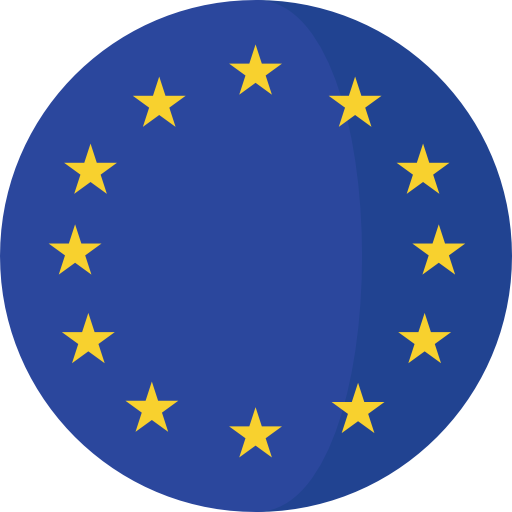 European Union
European Union
 Acting heads of government in the European Union
Acting heads of government in the European Union

 European Union
European Union
 President or Chairman
President or Chairman
 President or Chairman
President or Chairman
 Romania
Romania

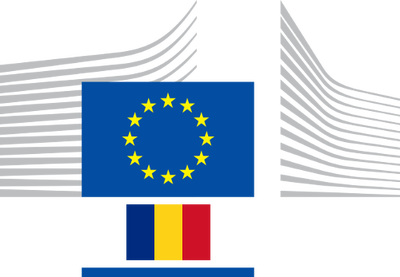
Ilie Gavril Bolojan (* 17. März 1969 in Birtin, Kreis Bihor) ist ein rumänischer Politiker (PNL). Er war von Dezember 2024 bis Februar 2025 Präsident des Senats. Seit Februar 2025 ist er kommissarischer Präsident Rumäniens.
伊利·加夫里尔·博洛扬(Ilie Gavril Bolojan,1969 年 3 月 17 日出生于比霍尔县比尔廷)是罗马尼亚政治家(民盟)。他曾于 2024 年 12 月至 2025 年 2 月担任参议院议长。自 2025 年 2 月以来,他一直担任罗马尼亚代理总统。
 *President and Prime Minister of Azerbaijan
*President and Prime Minister of Azerbaijan
 Ilham Aliyev
Ilham Aliyev

 Party and government
Party and government
 *President or Chairman
*President or Chairman

 *President and Prime Minister of Israel
*President and Prime Minister of Israel
 Jitzchak Herzog
Jitzchak Herzog
 President or Chairman
President or Chairman
 President or Chairman
President or Chairman
 Israel
Israel



 *Political parties in Italy
*Political parties in Italy
 *Italian political system
*Italian political system
 Europa der Nationen und der Freiheit,ENF
Europa der Nationen und der Freiheit,ENF
 Italy
Italy
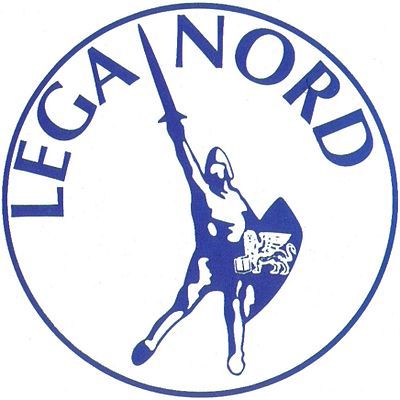

 European Union
European Union
 History of the European Union
History of the European Union

 European Union
European Union
 *Founding states
*Founding states

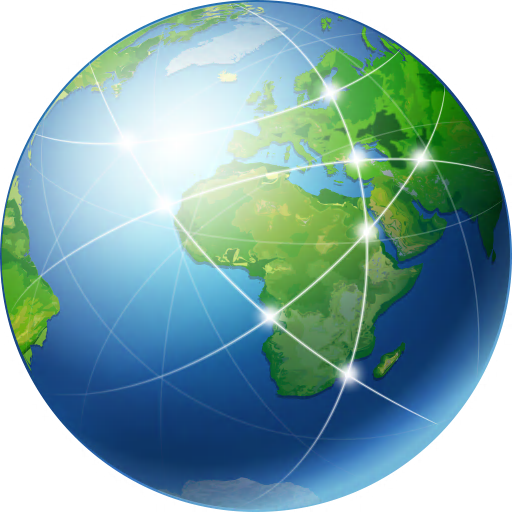 Geography
Geography

 Geography
Geography
 ***IMF Developed countries
***IMF Developed countries
 Italy
Italy
 IMF Developed countries
IMF Developed countries
 IMF Developed countries
IMF Developed countries
 TOP3
TOP3

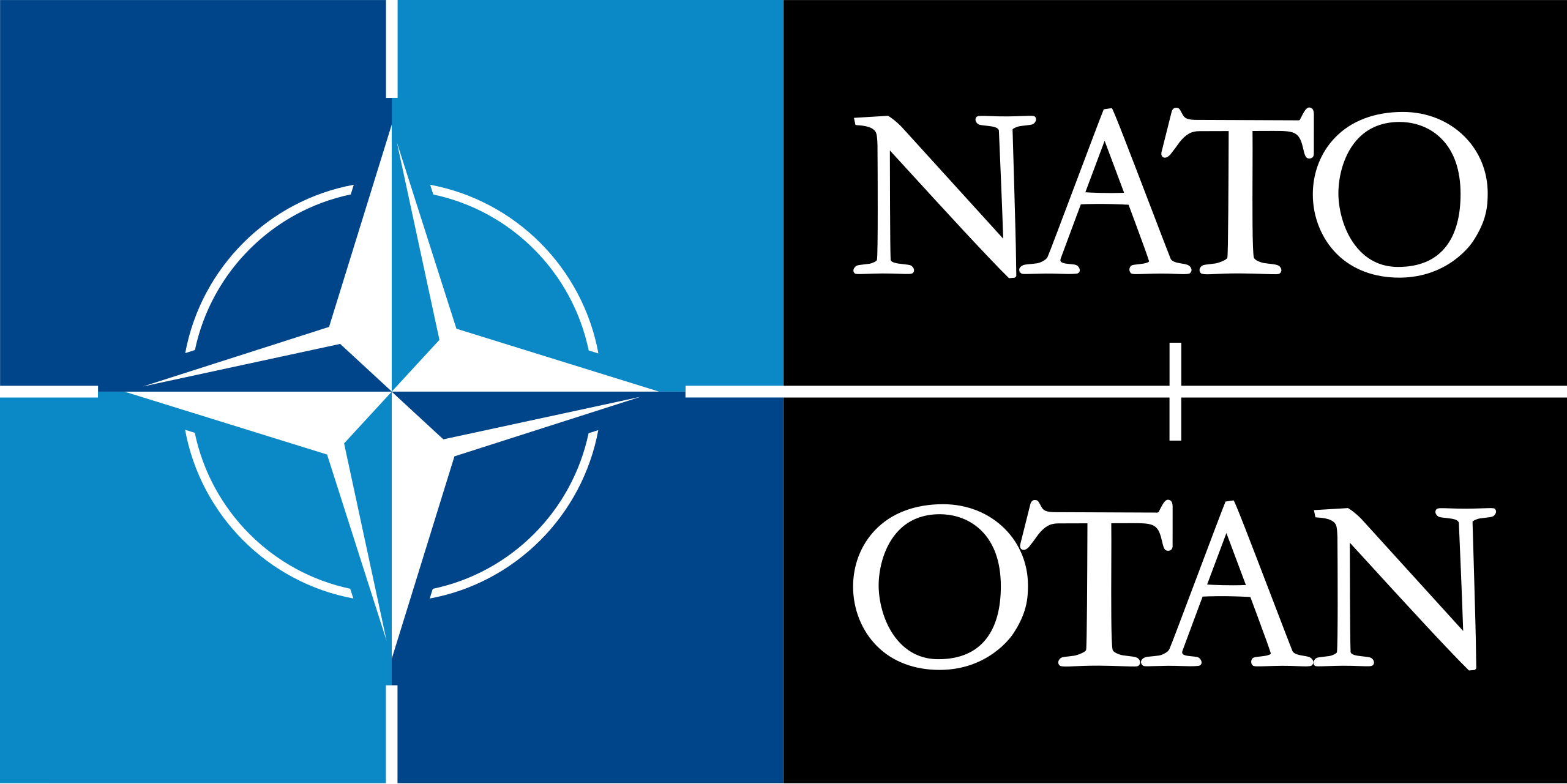 Mitglieder der NATO
Mitglieder der NATO

 Party and government
Party and government
 Group of the twenty most important industrial and emerging countries
Group of the twenty most important industrial and emerging countries

 Party and government
Party and government
 Group of Seven,G7
Group of Seven,G7

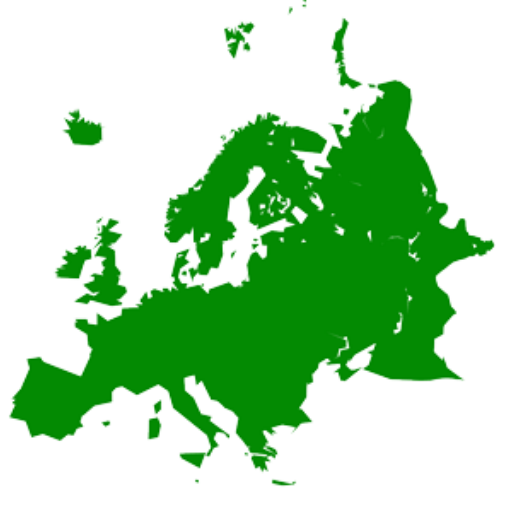 States of Europe
States of Europe

Italien (italienisch Italia [iˈtaːlja], amtlich Italienische Republik, italienisch Repubblica Italiana [reˈpubblika itaˈljaːna]) ist ein Staat in Südeuropa; seine Hauptstadt ist Rom.
Das italienische Staatsgebiet liegt zum größten Teil auf der vom Mittelmeer umschlossenen Apenninhalbinsel und der Po-Ebene sowie im südlichen Gebirgsteil der Alpen. Der Staat grenzt an Frankreich, die Schweiz, Österreich und Slowenien. Die Kleinstaaten Vatikanstadt und San Marino sind vollständig vom italienischen Staatsgebiet umschlossen. Neben den großen Inseln Sizilien und Sardinien sind mehrere Inselgruppen vorgelagert.
Als Kreuzweg der Zivilisationen des Mittelmeerraumes ist der italienische Beitrag zum kulturellen und historischen Erbe Europas und der Welt beachtenswert, das Gebiet des heutigen Italien war in der Antike die Kernregion des Römischen Reiches, die oberitalienische Toskana war das Kernland der Renaissance, ihr folgte von Rom ausgehend die Epoche des Barock.
Mit dem Risorgimento entstand der moderne italienische Nationalstaat: Von 1861 bis 1946 bestand unter dem Haus Savoyen das Königreich Italien, das rapide industrialisiert wurde, zu einer europäischen Großmacht aufstieg und ab den 1880er Jahren ein Kolonialreich in Nord- und Ostafrika errichtete. Die kostspielige und verlustreiche Teilnahme am Ersten Weltkrieg von 1915 bis 1918 führte zwar zur Vergrößerung des Staatsgebietes, aber auch zu schweren sozialen Unruhen und ebnete den italienischen Faschisten unter Benito Mussolini den Weg zur Macht. Das faschistische Regime herrschte von 1922 bis 1943/45 über Italien und führte das Land 1940 auf der Seite der Achsenmächte in den Zweiten Weltkrieg. Die Kriegsniederlage führte zum Verlust der Kolonien und zu vergleichsweise geringfügigen Gebietsabtretungen an den Nachbarstaat Jugoslawien. Im Juni 1946 beendete eine Volksabstimmung die Monarchie; die heutige Republik wurde ausgerufen.
Italien ist Mitinitiator der Europäischen Integration und Gründungsmitglied der Europäischen Union, des Europarates und der Lateinischen Union. Das Land ist Mitglied der G7, der G20, der NATO, der Vereinten Nationen (UNO), der Organisation für wirtschaftliche Zusammenarbeit und Entwicklung (OECD) und der Welthandelsorganisation (WTO).
Italien zählt laut Index der menschlichen Entwicklung als Industriestaat zu den höchstentwickelten Ländern der Erde[4] und ist gemessen am nominalen Bruttoinlandsprodukt die achtgrößte Volkswirtschaft der Welt.[5] Das Land genießt einen hohen Lebensstandard sowie Bildungsgrad und besitzt eine der höchsten Lebenserwartungen.[6] Italien ist das Land mit den meisten Welterbestätten der UNESCO (58)[7] und mit rund 65 Millionen Touristen jährlich eines der meistbesuchten Länder der Welt.[8]
意大利共和国(意大利语:Repubblica Italiana[注 1]),通称意大利(Italia),是欧洲主权国家,主要由位于南欧的靴型意大利半岛及两个地中海岛屿西西里岛和撒丁岛所组成。意大利北方的阿尔派恩山地区与法国、瑞士、奥地利以及斯洛文尼亚接壤,其领土包围着两个微型国家——圣马力诺和梵蒂冈及一个主权实体 ——马耳他骑士团,而在瑞士拥有座落于卢加诺湖湖畔的意大利坎波内这个境外领土。全国行政上划分为20个区域(其中5个为自治区)、110个省与8,100个城市。首都为罗马,意大利王国在1870年将首都设置在此,而都灵(1861年-1865年)及佛罗伦萨(1865年-1870年)也曾是意大利王国的首都。根据2017年统计,意大利人口为6,059万,领土面积为301,338平方公里,人口密度约每平方公里201.1人,属于温带地中海型气候。意大利是欧洲人口第5多的国家,人口在世界上排名第23位。意大利因其拥有美丽的自然风光和为数众多的人类文化遗产而被称为美丽的国度(Belpaese)。
现今的意大利地区是以前欧洲民族及文化的摇篮,曾孕育出罗马文化及伊特拉斯坎文明,而意大利的首都罗马,几个世纪以来都是西方世界的政治中心,也曾经是罗马帝国的首都。当罗马帝国在西部的统治瓦解后,意大利遭受了多次外族入侵,包括伦巴第人、东哥德人等日耳曼民族,之后还有诺曼人等。拜占庭帝国曾一度重新占领意大利地区。在14世纪后,意大利转而成为文艺复兴的发源地[7],而文艺复兴对欧洲影响深远,让欧洲思想前进了一大步。意大利过去分裂为许多王国与城邦,但最终在1871年成为统一的意大利王国(除了圣马力诺)[8]。意大利殖民帝国巅峰是在1942年第二次世界大战时期,首相墨索里尼统治下的意大利王国变成一个地中海帝国,把势力范围延伸到北非(利比亚 、突尼斯)、东非(厄立特里亚、索马里兰、埃塞俄比亚)、巴尔干(阿尔巴尼亚、达尔马提亚、黑山、克罗地亚独立国西部、希腊、罗得岛与十二群岛)和法国南部(隆河以东的领土、科西嘉岛、摩纳哥),而且拥有中国天津的租界[9]。1945年,墨索里尼建立的意大利社会共和国被盟军击垮,意大利在二战后,废除了君主制,意大利王国灭亡,建立了现在的意大利共和国。战后根据1947年巴黎和平条约,意大利殖民帝国终结。
意大利也在政治、文化、科学、医疗卫生、教育、体育、艺术、时尚、宗教、料理、电影、建筑、经济及音乐等方面具有重要的影响力。米兰是意大利的经济及工业中心,根据2009年全球语言监察组织(Global Language Monitor)的资料[10],它也是世界时尚之都。在2007年造访意大利的游客人数位居世界第5位,总共超过4,370万人次的国际游客造访[11],而罗马则是欧盟国家中第3多游客造访的城市[12],也被认为世界上最美丽的十大古城之一[13]。威尼斯则被认为是世界上最美丽的城市,《纽约时报》形容它“无疑是世界上最美丽的人造城市”[14]。
意大利共和国是一个议会制民主共和国,是一个发达国家,世界七大工业国之一,最佳出生地指数则在世界排名第8名[15]。意大利在2017年人类发展指数列表中则名列第28位[16],并拥有高度人均国内生产总额[17][18]。根据国内生产总额与购买力平价国内生产总值的数据,意大利分别是世界第8大与第10大经济体[19]。意大利的政府预算金额则是位居世界第5位[20]。意大利是北大西洋公约和欧盟的创始会员国,也是七大工业国集团、20国集团和成员之一。意大利也参与经济合作暨发展组织、世界贸易组织、欧洲议会、西欧联盟及欧洲创新中心(Central European Initiative)。意大利也参加申根协议,也是世界世界国防预算金额第9高的国家且分享北约的核武器。
意大利在欧洲及全球的军事、文化和外交事务扮演重要的角色,首都罗马则是世界上对于政治及文化具有重要影响力的城市,世界上许多著名的机构,例如国际农业发展基金会(International Fund for Agricultural Development)[21]、全球在地论坛(Glocal Forum)[22]、世界粮食计划署及联合国粮食及农业组织的总部都设在罗马。意大利也拥有较高的教育指数、劳动力人口[23]及慈善捐助金额[24]。人均预期寿命排名世界第11位[25]。医疗保健系统在2000年被世界卫生组织评比为世界第2。意大利也是一个全球化的国家[26]。意大利的国家品牌价值在2009年名列世界第6位[27]。意大利在艺术、科学和技术上拥有悠久的传统,且至2017年共有53处世界遗产,是拥有最多世界遗产的西方国家[28][29]。
イタリア共和国(イタリアきょうわこく、イタリア語: Repubblica Italiana)、通称イタリア(イタリア語: Italia、IPA: [iˈtaːlja] (![]() 音声ファイル) イターリャ)は、南ヨーロッパに位置する共和制国家。首都はローマ。 北をスイスとオーストリア、西がフランス、 東はスロベニアと国境を接している。南は地中海が位置しており、アルバニア、アルジェリア、クロアチア、ギリシャ、リビア、マルタ、モンテネグロ、スペイン、チュニジアと海上境界線を共有している。また、国土には独立国として小規模であるバチカンとサンマリノが存在している。
音声ファイル) イターリャ)は、南ヨーロッパに位置する共和制国家。首都はローマ。 北をスイスとオーストリア、西がフランス、 東はスロベニアと国境を接している。南は地中海が位置しており、アルバニア、アルジェリア、クロアチア、ギリシャ、リビア、マルタ、モンテネグロ、スペイン、チュニジアと海上境界線を共有している。また、国土には独立国として小規模であるバチカンとサンマリノが存在している。
イタリアはヨーロッパにおける古代文化の発祥地の一つとして知られ、同時に世界的な文化大国の一国に数えられている。文化・学問・宗教で歴史的に影響力を発揮しており、バチカン市国を首都ローマの領域内に事実上保護し、レオナルド・ダ・ヴィンチやガリレオ、ミケランジェロ、コロンブス、マキャヴェリといった偉人たちの故国でもある。かつてのローマ帝国の中枢となる地域であり、またルネサンスやリソルジメントなどの幾つかの世界史的事象の主要な舞台となった。
また、高い人間開発指数を持つイタリアは文化・経済ともに先進国であり[1]、名目GDPでは世界第8位かつ購買力平価では世界第12位、ユーロ圏ではドイツとフランスに次ぐ第3位の経済規模を持つ経済大国である[2]。
国際連合、北大西洋条約機構、G7、G20、OECD、欧州評議会、地中海連合、パリクラブの一員であり、ヨーロッパにおける四大国「ビッグ4」や、文化的・経済的・政治的に大きな影響を及ぼす列強の一角に数えられる[3][4]。また、コンセンサス連合の参加国であると同時に主導国である。軍事面では、世界第8位の軍事力を有している[5]。
総面積は30万1,338km2で、ロ・スティヴァレ(lo Stivale)と称される地中海に突き出たブーツ状のイタリア半島を中心に、地中海に浮かぶシチリア島とサルディーニャ島を主要な領土としており、いくつかの小島も領有している。北部にはアルプス山脈が、半島に沿ってアペニン山脈が走っており、平野はその間にあるポー平原などに限られ、国土の40%が山岳地帯である[6]。気候は各地ともに温暖で、北部を除き国土の大部分は温帯の地中海性気候に属し、これは農業と歴史に大きな影響を与えてきた[7]。西に港へ適したリグリア海、東には大陸棚が海の幸を豊富にもたらすアドリア海、南東部にはバルカン半島へと繋がるイオニア海があり、地理的に恵まれている。南にはティレニア海があり周辺にはストロンボリ火山やヴェスヴィオ山、エトナ山などの火山が集まっていて、世界有数の地震地帯である[6]。
Italy (Italian: Italia [iˈtaːlja] (![]() listen)), officially the Italian Republic (Italian: Repubblica Italiana [reˈpubblika itaˈljaːna]),[13][14] is a country consisting of a peninsula delimited by the Alps and several islands surrounding it,[15] whose territory largely coincides with the homonymous geographical region.[16] Italy is located in the centre of the Mediterranean Sea, in Southern Europe,[17][18][19] and is also considered part of Western Europe.[20][21] A unitary parliamentary republic with Rome as its capital and largest city, the country covers a total area of 301,340 km2 (116,350 sq mi) and shares land borders with France, Switzerland, Austria, Slovenia, and the enclaved microstates of Vatican City and San Marino. Italy has a territorial exclave in Switzerland (Campione) and a maritime exclave in Tunisian waters (Lampedusa). With around 60 million inhabitants, Italy is the third-most populous member state of the European Union.
listen)), officially the Italian Republic (Italian: Repubblica Italiana [reˈpubblika itaˈljaːna]),[13][14] is a country consisting of a peninsula delimited by the Alps and several islands surrounding it,[15] whose territory largely coincides with the homonymous geographical region.[16] Italy is located in the centre of the Mediterranean Sea, in Southern Europe,[17][18][19] and is also considered part of Western Europe.[20][21] A unitary parliamentary republic with Rome as its capital and largest city, the country covers a total area of 301,340 km2 (116,350 sq mi) and shares land borders with France, Switzerland, Austria, Slovenia, and the enclaved microstates of Vatican City and San Marino. Italy has a territorial exclave in Switzerland (Campione) and a maritime exclave in Tunisian waters (Lampedusa). With around 60 million inhabitants, Italy is the third-most populous member state of the European Union.
Due to its central geographic location in Southern Europe and the Mediterranean, Italy has historically been home to myriad peoples and cultures. In addition to the various ancient peoples dispersed throughout what is now modern-day Italy, the most predominant being the Indo-European Italic peoples who gave the peninsula its name, beginning from the classical era, Phoenicians and Carthaginians founded colonies mostly in insular Italy,[22] Greeks established settlements in the so-called Magna Graecia of Southern Italy, while Etruscans and Celts inhabited central and northern Italy respectively. An Italic tribe known as the Latins formed the Roman Kingdom in the 8th century BC, which eventually became a republic with a government of the Senate and the People. The Roman Republic initially conquered and assimilated its neighbours on the Italian peninsula, eventually expanding and conquering parts of Europe, North Africa and Asia. By the first century BC, the Roman Empire emerged as the dominant power in the Mediterranean Basin and became a leading cultural, political and religious centre, inaugurating the Pax Romana, a period of more than 200 years during which Italy's law, technology, economy, art, and literature developed.[23][24]
During the Early Middle Ages, Italy endured the fall of the Western Roman Empire and barbarian invasions, but by the 11th century numerous rival city-states and maritime republics, mainly in the northern and central regions of Italy, became prosperous through trade, commerce, and banking, laying the groundwork for modern capitalism.[25] These mostly independent statelets served as Europe's main trading hubs with Asia and the Near East, often enjoying a greater degree of democracy than the larger feudal monarchies that were consolidating throughout Europe; however, part of central Italy was under the control of the theocratic Papal States, while Southern Italy remained largely feudal until the 19th century, partially as a result of a succession of Byzantine, Arab, Norman, Angevin, Aragonese, and other foreign conquests of the region.[26] The Renaissance began in Italy and spread to the rest of Europe, bringing a renewed interest in humanism, science, exploration, and art. Italian culture flourished, producing famous scholars, artists, and polymaths. During the Middle Ages, Italian explorers discovered new routes to the Far East and the New World, helping to usher in the European Age of Discovery. Nevertheless, Italy's commercial and political power significantly waned with the opening of trade routes that bypassed the Mediterranean.[27] Centuries of foreign meddling and conquest, and the rivalry and infighting between the Italian city-states, such as the Italian Wars of the 15th and 16th centuries, left Italy politically fragmented, and it was further conquered and divided among multiple foreign European powers over the centuries.
By the mid-19th century, rising Italian nationalism and calls for independence from foreign control led to a period of revolutionary political upheaval. After centuries of foreign domination and political division, Italy was almost entirely unified in 1861 following a war of independence, establishing the Kingdom of Italy.[28] From the late 19th century to the early 20th century, Italy rapidly industrialised, mainly in the north, and acquired a colonial empire,[29] while the south remained largely impoverished and

 States of Asia
States of Asia